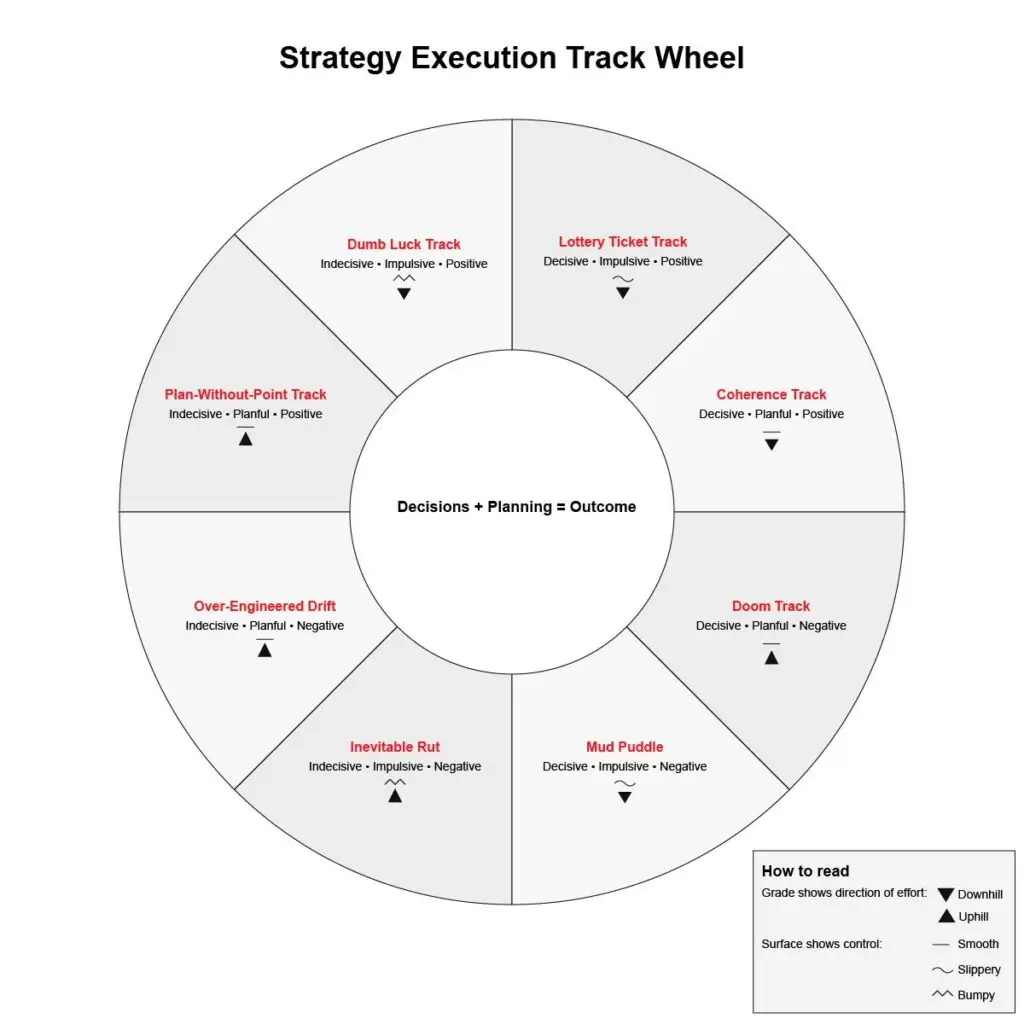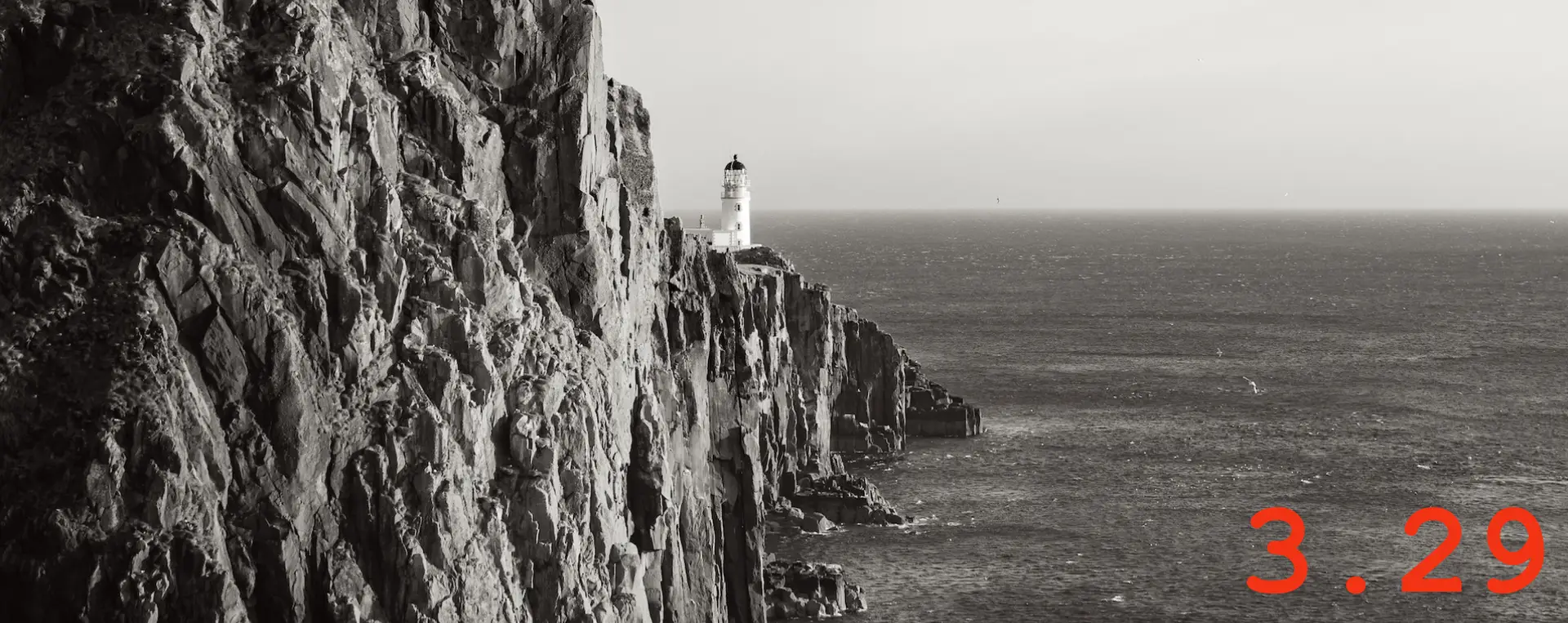Thought leadership should be fun, fast, and fearless. You tap into excitement about new ideas and advocate for something better. That’s the mindset behind The Idea Sled. Projects glide forward gracefully. It’s the momentum of commitment. This newsletter shows you how.
What’s at stake. Strategy fails when leaders drift on decisions, improvise plans, or chase outcomes without a stable destination. Your job is to set the course, keep speed, and finish the course upright.
Why I care. Stewards of capital and clients deserve clarity. Clear decisions protect dignity. Shared plans create trust. Execution turns responsibility into relief. This clarity also makes strategy legible and testable. The principle should be simple: put ideas to work and reduce friction for the people doing so.
A quick vignette
A head of strategy at a multi-asset manager prepares a platform expansion: add a commodities sleeve and bring research, orders, and reconciliations into a single hub. Leadership commits, but internal teams have not defined the destination or path. Partners wait as the calendar slips and the market moves. The sled is drifting.
To get back on course, the head of strategy pairs the roadmap with a clear point of view for clients and a short set of operator principles so the team moves in one direction. Clarity allows thought leadership and product development to move together. The goal is a route without undue slipping and bumps. It teaches the market what good looks like. The sled arrives at coherence.
The framework
Execution quality depends on three axes that explain why a strategic initiative takes the right track or spins off course. You can use these axes to describe where an initiative sits today.
- Decision. Indecisive to decisive. Who owns choices, how visible they are, and how quickly they travel.
- Planning. Impulsive to planful. How steps are sequenced, dependencies managed, and cadence set.
- Outcomes. Negative to positive. What stakeholders experience in the results, such as clearer P&L, lower error rates, or faster cycle time.
In other words, decision and planning result in outcomes, good or bad.

What sets you off-course
Organizational gravity often pulls initiatives toward predictable but avoidable failure. Sometimes, indecision haunts cultures that mistake analysis for progress or that delegate authority without accountability. The room fills with voices; no one owns the choice. At other times, impulsiveness emerges under market pressure. New leadership or stakeholders may chase quick wins and reactive sprints. Speed becomes the strategy, but direction gets lost in the rush. And finally, planning can suffer when resource constraints or internalized fear force shortcuts. Siloed teams work past each other, and complexity gets underestimated until integration deadlines loom.
Specifically in institutional finance and capital markets, regulatory pressure can force impulsive responses while complex vendor ecosystems breed indecision. Risk management cultures favor careful planning, but competitive dynamics reward speed over thoroughness. These forces set the track before the first milestone meeting convenes. If you don’t recognize the pull and the track conditions early, you can easily end up down the wrong hill or in the mud.
Tracks: four tracks, eight finish lines
The four tracks are defined by the Decision × Planning posture. Each track has two finish lines based on Outcomes.
- Coherence Track (Decisive × Planful). Smooth surface. You get where you’re going.
- Coherence. Positive outcomes: downhill with control.
- Doom. Negative outcomes: downhill in the wrong direction.
- Skitter Track (Decisive × Impulsive). Slippery surface. You lose control and constantly change direction.
- Lottery Ticket. Positive outcomes: fast and fragile.
- Mud Puddle. Negative outcomes: speed into soft ground; momentum dies in a splash.
- Drift Track (Indecisive × Planful). Smooth surface. Plans abound, but you lack decisions to determine where to go.
- Plan-Without-Point. Positive outcomes: plans change weekly; progress comes from tailwinds and tenacity.
- Over-Engineered Drift. Negative outcomes: immaculate plans that work on paper; indecision sends you somewhere else.
- Chaos Track (Indecisive × Impulsive). Bumpy surface.
- Dumb Luck. Positive outcomes: unrepeatable.
- Inevitable Rut. Negative outcomes: stuck and spinning.
Finance and markets examples
In practice, inside institutional finance, the tracks ride through the machinery of investment operations. For example, the processes from order capture to settlement and reconciliation. Multiple factors set the surface and grade for your sled ride, such as where IBOR lives, who owns corporate actions, how market-data entitlements are governed, and how FIX and SWIFT map to controls. Here are four possible scenarios:
- Coherence Track, Coherence state. Bringing AI controls to the middle office. Implement the governance workflow and monitoring features. Publish a compact operator note that names failure modes, control points, and review roles. The note refines the strategy and amplifies adoption; it is not the trigger. With the same product in place, exception review time falls, and releases settle into a steady cadence.
- Coherence Track, Coherence state. Establishing a single source of truth for portfolio data. Stand up the canonical security master and migration tooling. Release a reference architecture that explains seam decisions and changeover steps. The paper makes the product legible to operators and partners. Operators see P&L when needed, and reconciliation break rates start to fall.
- Skitter Track, negative state. Ending up in the mud puddle on distribution. Leadership greenlights a cross-border push before compliance and operational controls are ready. A public POV goes out and amplifies a move that lacks support. Traffic climbs, pipeline momentum stalls, and regulators request changes. The campaign pauses while readiness catches up. Once you’re ready again, people neither care nor fully trust you.
- Drift Track, negative state. Over-engineered data platform. Sequential RFPs for OMS/IBOR and market data entitlements providers drag on; the “data lake” blueprint stays internal. Without a published POV to refine and amplify the strategy, partners guess at what’s. Settlement and reconciliation slip; the client reporting upgrade misses a cut off, breaks persist, and cloud and data spend climb.
Shifting tracks
A shift begins with the destination. In your next steering session, write the point of arrival in one sentence and pair it with the ideas-led principle that makes it worth reaching. Keep both visible through turbulence. A short public note conveys the same idea to clients and partners and lowers second-guessing. One line anchors the work: name the point and the reason, then hold both.
Next, set the line. The sequence steps from the current state to the finish. Put owners, dates, and dependencies in one place. Add a one-page operator note so teams interpret the plan the same way. Publish a matching outside view that explains the same spine without internal detail. One roadmap, two tellings.
Measure speed and grip. Track cycle time, break rates, and control points. Mirror the same measures in your public point of view so vendors and partners align without meetings. Numbers that appear in both places create coherence and speed decisions. What you measure in private, you teach in public.
Then, decide faster. Right-size the room and time-box each choice. Record the rationale where operators and vendors can see it. Visibility builds trust and lowers rework. Decisions that travel create trust and speed.
Course check
Every initiative lives somewhere on the wheel, four tracks and eight states. Grade and surface shift with context, including product complexity, messaging discipline, regulation, and vendor readiness. Calibrate by naming the current state, then change one axis at a time and watch the terrain respond. When product work and thought leadership move together, you and your team can find your place among the eight states. Choose your next and keep your idea sled upright on the course.
If a quick working session would help you place an initiative on the wheel and get your idea sled back on course, reply here.





